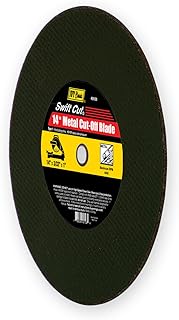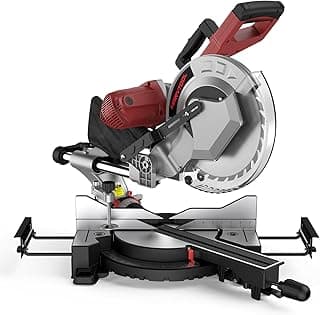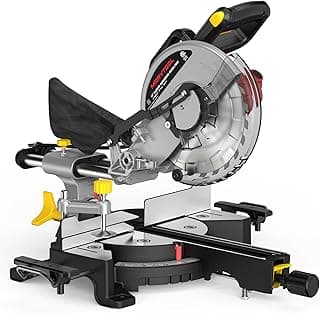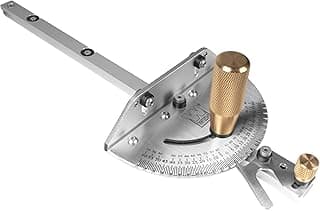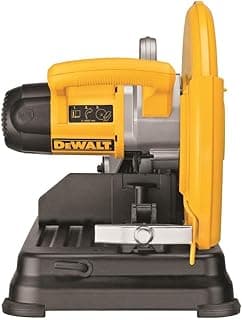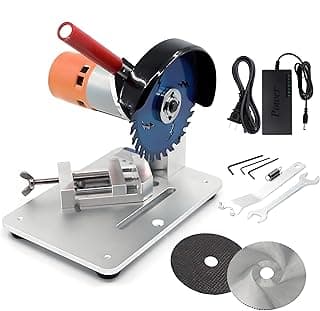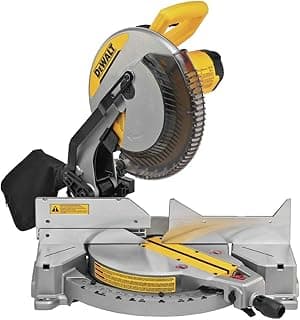When precision meets power, a quality saw blade makes all the difference. Choosing the best chop saw blade for wood isn’t just about sharpness—it’s about selecting the right tool for your cutting needs. Whether you’re a carpenter, DIY enthusiast, or contractor, using the proper blade can dramatically improve your results.
But wait—there’s more to it than just the blade itself. Pairing it with the best chop saws for cutting rebar ensures versatility across materials. Likewise, exploring the best chop saw blade options gives insight into tooth count, kerf size, and material composition. And if you’re still hunting for the best chop saw, understanding how the right blade complements the saw’s motor and RPM will help you make the smartest investment.
Let’s dive in to uncover what truly sets top-performing wood-cutting blades apart.
Top Picks
Best Smooth-Finish Cuts: FOXBC 12 Inch Combination Miter Saw Blade, 60-Tooth
The FOXBC 12-Inch Combination Miter Saw Blade stands out for its balance between power, precision, and durability. With 60 teeth arranged in a combination pattern, it’s designed to handle both ripping and crosscutting with ease. Each set of five teeth is separated by a large gullet, allowing for efficient chip removal during ripping while maintaining a fine finish when crosscutting. The blade’s .102-inch thin kerf reduces resistance, enabling faster cuts with less strain on the saw motor. Its 15° hook angle and .071-inch plate enhance control, ensuring clean, accurate results on hardwoods, softwoods, and composites.
Built from FOXBC’s proprietary FoxCarbide tungsten carbide, this blade delivers impressive toughness and wear resistance. Users appreciate its consistent performance, even after extended use, noting smoother edges and minimal burning on wood surfaces. The blade runs quietly with minimal vibration, which improves cut quality and comfort during long sessions. However, some buyers mention that its 1-inch arbor size limits compatibility with certain miter saws, requiring an adapter for specific models. Overall, this industrial-grade blade earns strong marks for its combination of speed, smoothness, and durability, making it a reliable option for both professional woodworkers and serious DIY users.
Best Durable Performance: 14 Inch 60-Teeth Circular Saw Blade for Cutting Wood,
The NINEROARS 14-Inch 60-Tooth Wood Cutting Blade offers a strong mix of precision and endurance suited for both hobbyists and professionals. Constructed from premium cemented carbide, its teeth are engineered for sharpness and extended wear resistance, allowing it to cut efficiently through a range of materials. From plywood and MDF to laminated panels and solid wood, the blade maintains accuracy and a smooth finish even after prolonged use.
Its 60-tooth configuration provides a fine balance between cutting speed and surface quality, ideal for making clean, controlled cuts. The blade is manufactured using a high-frequency welding process, which strengthens the joint structure and minimizes cracking risks, ensuring safe and stable operation. Weighing 1.72 kilograms, it offers solid stability on both table saws and miter saws.
Users report that the NINEROARS blade performs well across diverse materials without significant tear-out, maintaining a quiet and steady cut. Many appreciate its long service life and dependable sharpness, especially for continuous woodworking tasks. However, some note that the maximum speed of 4500 RPM limits compatibility with certain high-speed saws. Overall, it’s a durable, versatile blade that consistently delivers clean, reliable results for everyday woodcutting projects.
Best Multipurpose Cutting: Evolution RAGE355BLADE- 14” Multi-Material Blade , Silver
The EVOLUTION 14-Inch 36-Tooth Carbide Blade is built for versatility, offering strong performance across multiple materials, including steel, aluminum, wood, and plastic. Designed as a replacement blade for the Rage2 and Evosaw380 chop saws, it excels in delivering fast, precise cuts without the need for coolant. Its carbide teeth are engineered to handle heavy-duty applications, maintaining sharpness and stability even when cutting through dense metals.
The 36-tooth configuration allows efficient chip removal, giving it an edge in speed and durability over finer-tooth blades. At 1.54 kilograms and 0.08 inches thick, the blade offers a sturdy structure that resists warping under continuous load. It produces minimal heat and virtually no sparks, making it safer and cleaner to use in both workshop and jobsite settings.
Users appreciate the EVOLUTION blade for its consistent, smooth performance and its ability to transition between materials without changing tools. The clean, burr-free cuts on steel and aluminum save time on finishing work, while the absence of excessive heat enhances operator safety. However, some woodworkers find that its lower tooth count makes it less ideal for ultra-fine finish cuts on wood. Overall, this blade is a reliable choice for professionals who value cutting efficiency, material flexibility, and safety in demanding environments.
FAQs
What saw blade is best for cutting wood?
The best saw blade for cutting wood depends on your project type, wood density, and desired finish. For general woodworking, carbide-tipped blades are ideal because they maintain sharpness and durability through repeated use. A 60- to 80-tooth blade works best for fine cuts, producing smooth edges without splintering.
For framing or rough cuts, a 24- to 40-tooth blade provides faster performance. Choose thin-kerf blades to reduce material waste and power demand, especially for cordless tools. If you work with hardwoods, look for high-quality carbide or titanium alloy teeth that resist heat and wear. In contrast, for plywood or laminated boards, an alternate top bevel (ATB) grind ensures cleaner crosscuts.
What are the best chop saw blades?
The best chop saw blades combine precision, longevity, and material versatility. Top brands such as Freud, Diablo, and DeWalt design blades specifically engineered for consistent, accurate cuts. For wood applications, blades with tungsten carbide tips offer superior edge retention.
A 12-inch blade with 80 teeth is ideal for furniture making and trim work, while 60-tooth blades balance speed and smoothness for general carpentry. Multi-material blades are also valuable for professionals who occasionally cut metal or plastic. However, dedicated wood blades outperform all-purpose options in cut quality and finish. Always match your blade’s RPM rating with your saw’s power output for safety and efficiency.
What type of miter saw blade for wood?
For miter saws, the best blade for wood cutting is a fine-tooth, carbide-tipped blade designed for clean crosscuts. Use a 60- to 80-tooth ATB blade for detailed work like molding, cabinetry, or trim. The alternating top bevel design slices wood fibers efficiently, leaving polished edges with minimal tear-out.
If you handle thick lumber or large framing jobs, opt for a 40-tooth general-purpose blade that offers a balance between speed and smoothness. Professional woodworkers often prefer thin-kerf designs because they require less force to cut, extending the saw’s motor life and improving precision.
Is a 10 or 12 inch miter saw better?
Both 10-inch and 12-inch miter saws have advantages, and the best choice depends on your work type. A 10-inch miter saw is lighter, more affordable, and spins faster, offering cleaner cuts on thinner stock. It’s ideal for hobbyists and trim carpentry.
A 12-inch miter saw, on the other hand, provides deeper cut capacity and more power, making it perfect for thick lumber, beams, and larger woodworking projects. While 12-inch blades are more expensive and heavier, they deliver superior versatility and cutting depth. For most professionals, the 12-inch model is a worthwhile investment for its broader cutting range.
Final Thoughts
Choosing the best chop saw blade for wood comes down to understanding your material and matching the blade’s tooth design, size, and composition to your saw’s capabilities. Carbide-tipped blades with the right tooth count deliver long-lasting sharpness and precision. Whether you prefer a 10-inch or 12-inch setup, investing in a high-quality blade ensures cleaner cuts, greater efficiency, and professional-grade results on every woodworking project.












